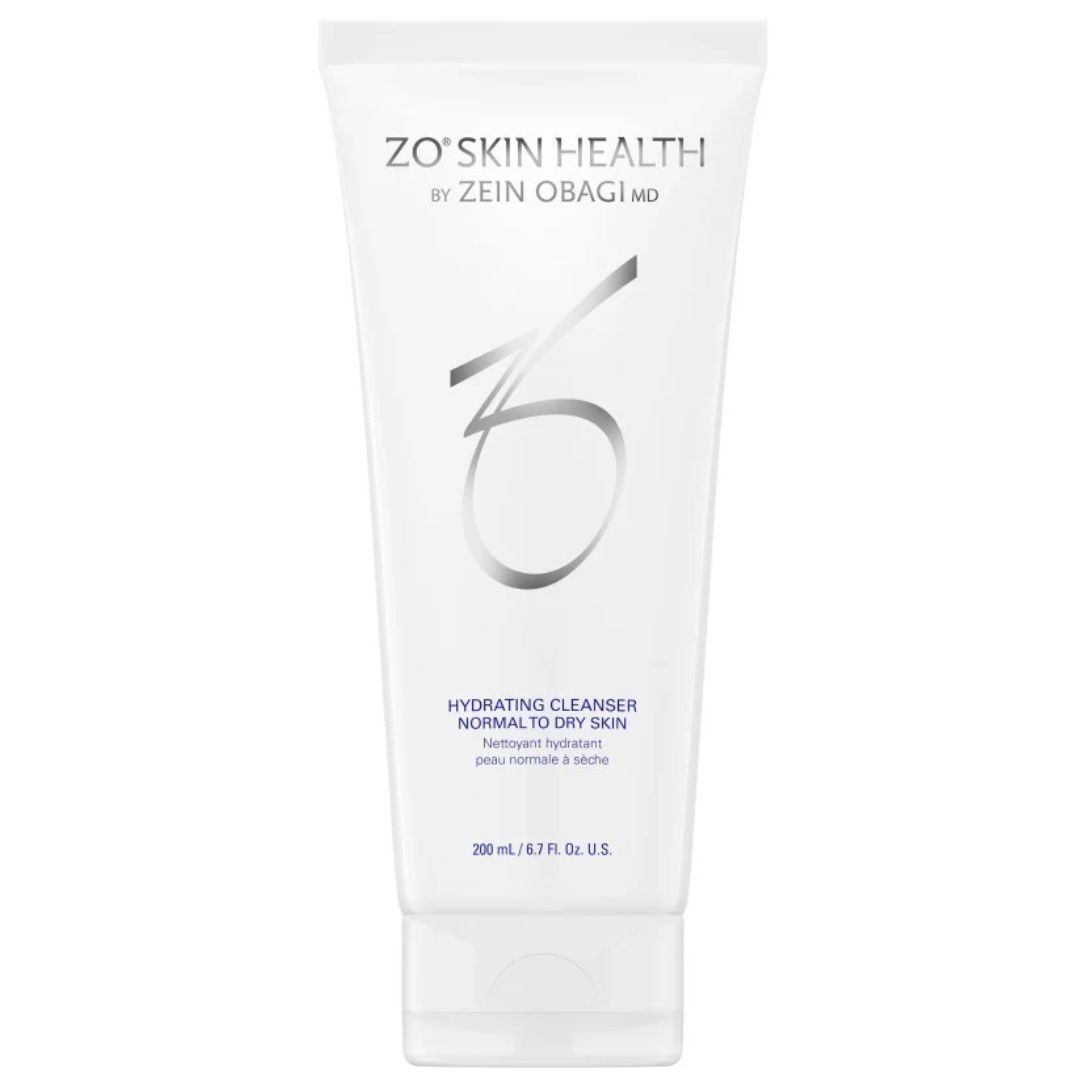I recently found out that my skin is ageing faster than I am - here's what I've been doing in an attempt to claw back the years
The primary cause might just surprise you
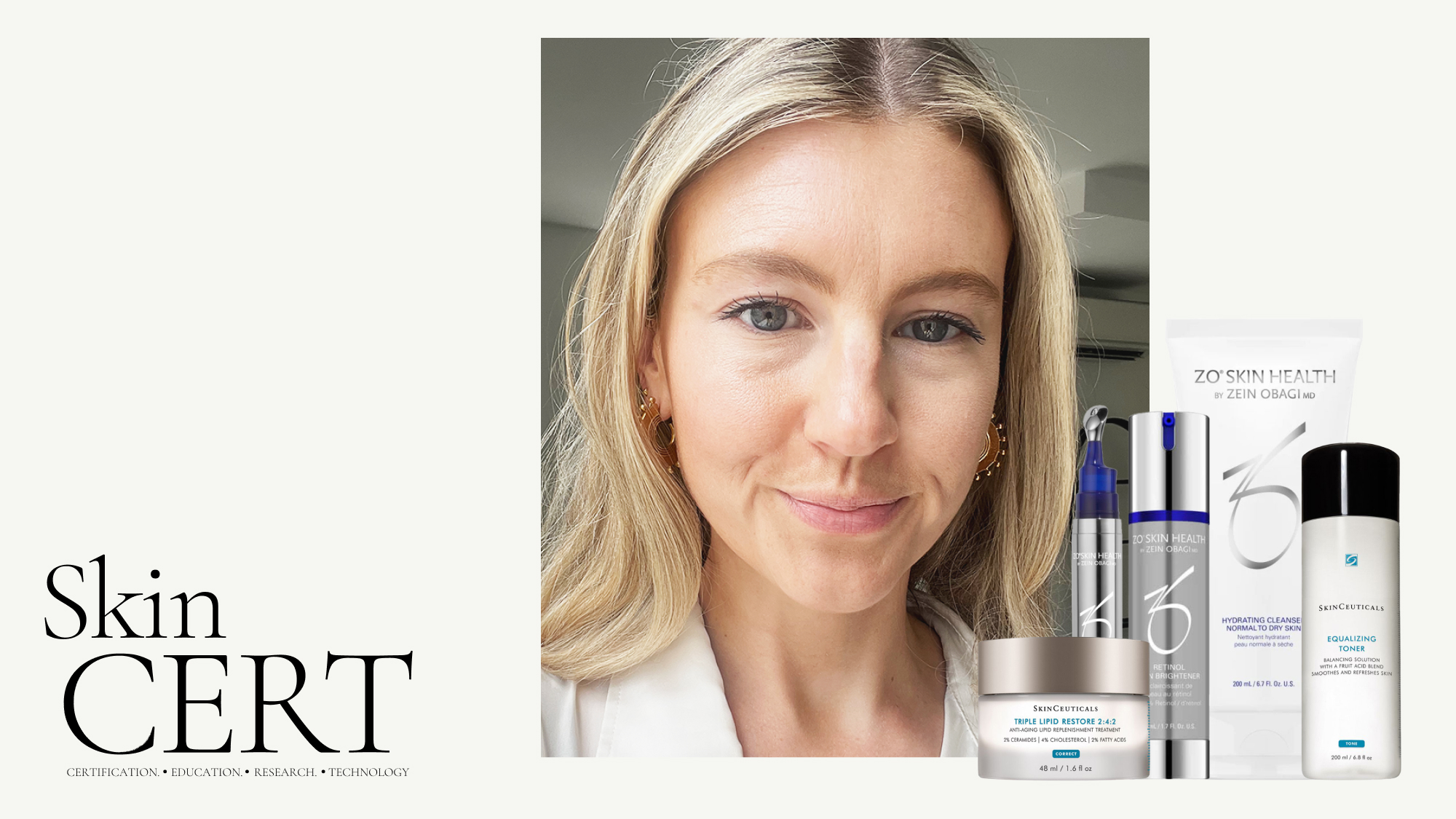

Earlier this year I attended a sun care launch with lots of my beauty editor colleagues. As part of that event, we were offered skin scans that would reveal what our skin looked like beneath the surface - the opportunity to look at how well we were protecting and caring for our skin. The other thing it can do is calculate a skin age based on your results, which it determines by comparing your numbers to those in its large database.
My peers and I lined up, and one by one my friends all received very similar readings - a skin age younger than their actual years. Some were even 7/8 years younger. Everyone left extremely pleased with themselves. And then my time came - I sat on the stool, leant forward for the photographs and waited until the computer revealed my number...39. I am 36.
I'm not going to lie to you, I was pissed off. I know three years is nothing in the grand scheme of things, but as a beauty editor who prides herself on a thorough skincare routine it threw me. I never miss a cleanse, I use nourishing and antioxidant serums every single day, and I never leave the house without sun cream on my face. I'll admit that my retinol-use has dropped off slightly since having my two children and I blame them entirely for the fact that I no longer prioritise facials. And I suppose I have, since I hit my mid-30s, noticed that my skin looks a little less lifted. Unlike lots of my colleagues I don't get Botox (to be clear, I'm not judging, it's just not happened for me - yet), I don't stare into my mirror looking for new lines and it doesn't bother me when I get IDed buying a bottle of wine in Sainsbury's. If I'm totally honest, I've never really been concerned with ageing. Until now...
I sat on the stool, leant forward for the photographs and waited until the computer revealed my number...39. I am 36.
I decided there and then that I would look into this further. If I, someone who has access to incredibly hardworking products and a good knowledge of what's needed for optimum skin health, was getting it wrong, then what hope is there for those not in my position?
If I'm going to figure out why my skin is ageing faster than I am, I need to know exactly what's at play here. And to do that I needed to return to the scene of the crime - back to the skin scanner. This is how I found Montrose London - arguably the chicest dermatology and aesthetics clinic in the city. They had just taken delivery of a Visia Skin Analysis System - the skin scanner in question - and were more than happy to go on this journey with me.
I went through the same procedure and the result was identical - 39. But this time, I found out why.
A rather surprising result
"Your skin is very dehydrated, which is leading to uneven texture and tone as well as the impression of fine lines," Montrose's Aesthetician Jess Sedgwick told me. "Skin with a strong skin barrier surface should look cross-hatched, whereas anyone suffering from dehydration may see vertical fine lines in areas. You are experiencing this around your mouth, nasal labial folds and forehead."
Celebrity news, beauty, fashion advice, and fascinating features, delivered straight to your inbox!
Dehydration? I knew that my skin was often slightly parched, but I had no idea how bad it had got and how much harm it was causing. "Dehydrated skin may appear to age faster as the skin barrier is not working as it should," adds Montrose London's Consultant Dermatologist Dr Mariana Noy. "Dehydrated skin often appears dull and lacks the vibrancy of well-hydrated skin."
Jess showed me on screen how this had caused a loss of elasticity, causing my cheeks to drop and the fold near my mouth to look worse. Which if not treated, will make my jawline look less defined and lead to jowls.
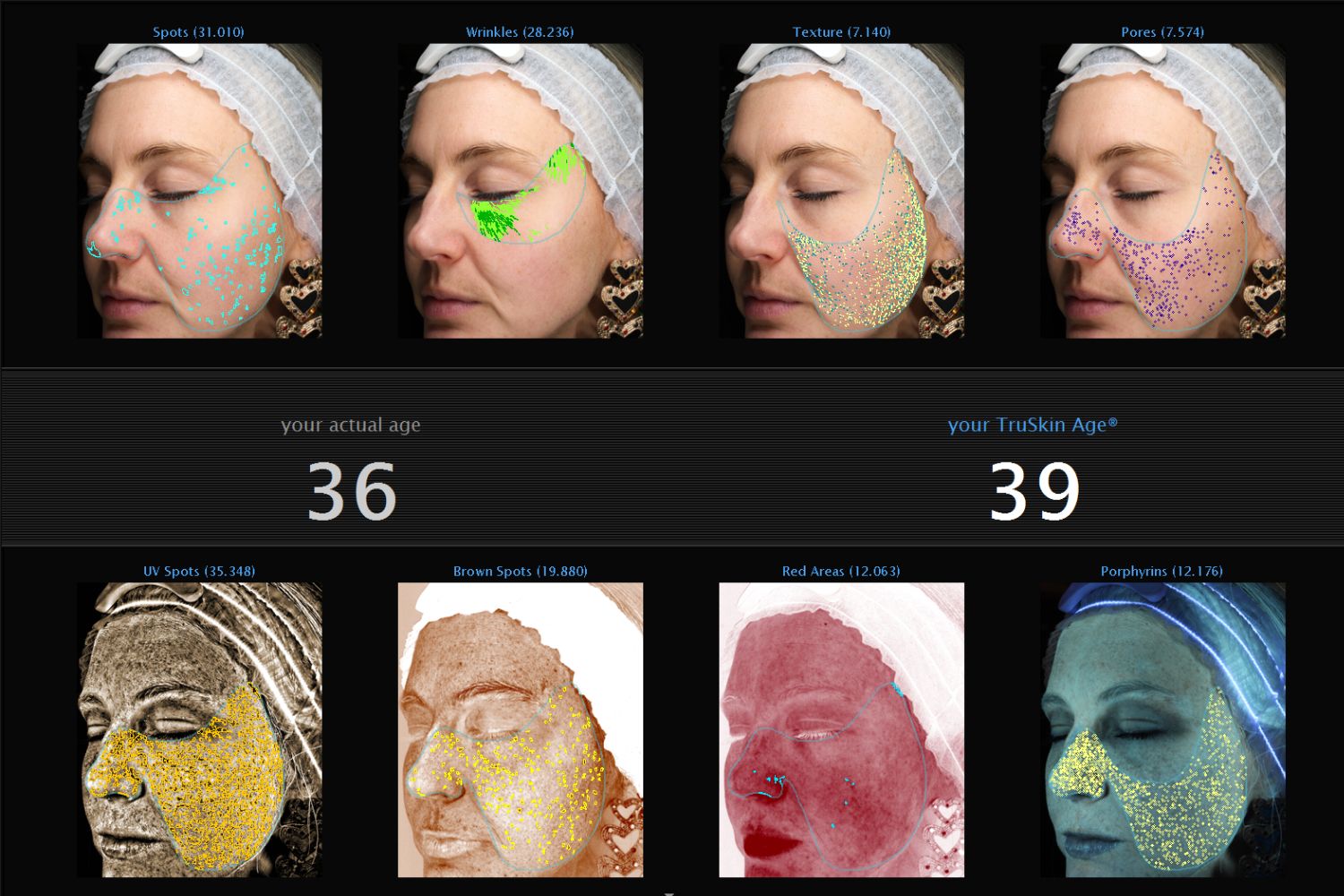
My first Visia results
This wasn't my only problem though. "Your UV damage and brown spots are also contributing to a higher TruSkin age, as this will have caused premature ageing. Pigmentation also holds inflammation which is present in your skin." I looked at the images of my brown spots and UV damage and it did look bad, but I grew up in the 90s and early 00s when there was still very little education about the severe damaging effects of the sun. There's a huge chunk of my early twenties when I would roast myself on a sun lounger, burn to the point of almost blistering and then peel. I would do this regularly. So this sun damage wasn't really a surprise to me. What was surprising was how much inflammation this was causing. Jess showed me the inflammation graphic and the amount of redness is shocking. "This dehydrates the skin even more, as well as breaks down your collagen and elastin preventing new proteins from forming."
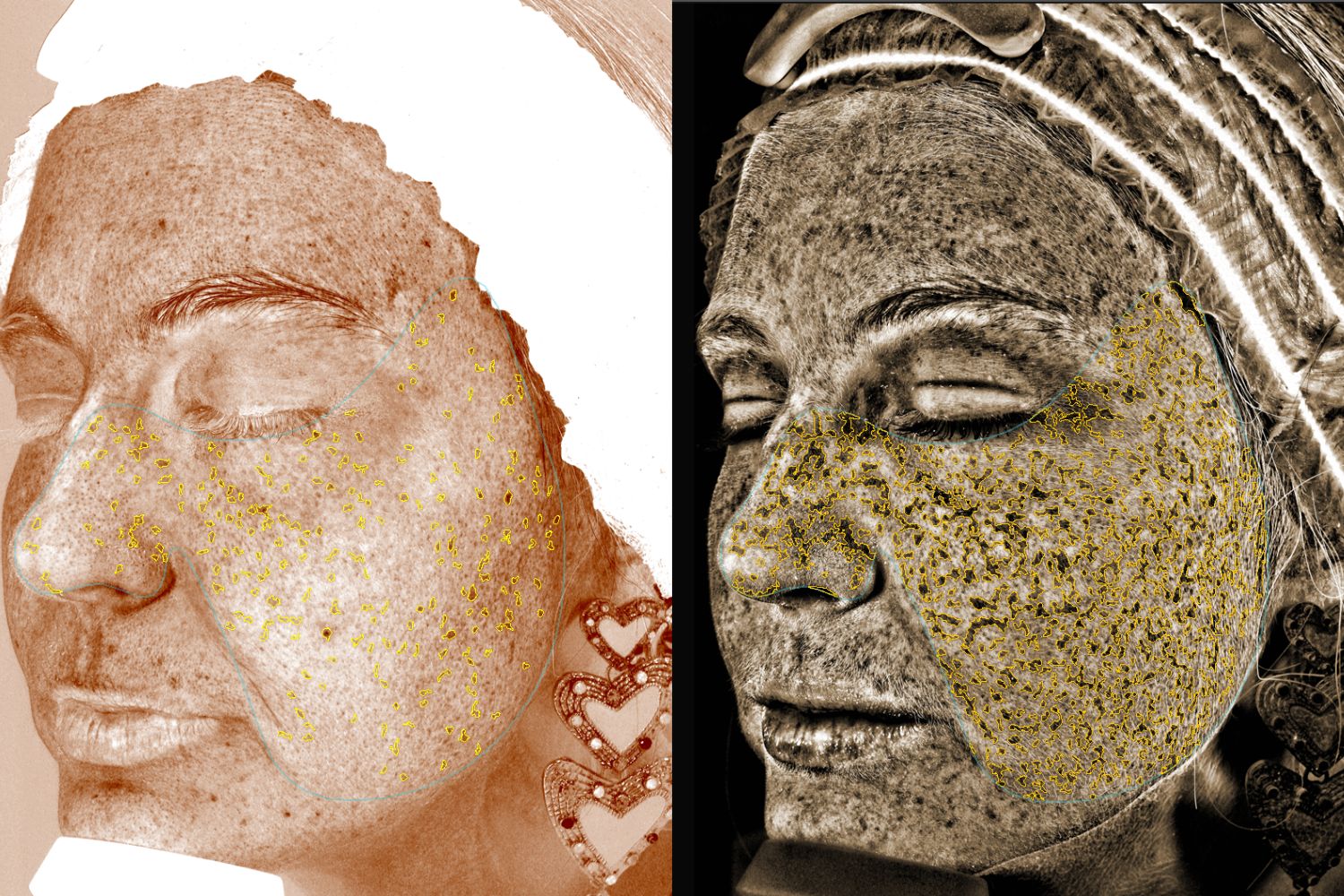
Images from the Visia showing my brown spots (L) and UV damage (R)
Then there was the texture build-up, bacteria and open pores. Jess explained that this is often down to lifestyle - stress, incorrect products or lack of sleep. As I mentioned I have two children and neither is particularly keen on sleep, so this added up. "Getting enough sleep is key to skin health, so what's likely to have happened is transepidermal water loss (the amount of water vapour evaporating from the skin surface) has increased, meaning a decrease in skin hydration. If the skin isn’t getting enough moisture naturally, or from skincare, the pores will open and attempt to get some from the air. This then leaves your skin more vulnerable to environmental damage. This has also dulled the complexion, contributed to any breakouts, and made the fine lines/wrinkles look worse."
So all in all, not a good result. Whilst my dehydration was the root cause of a lot of my skin issues, all of the above was contributing to making my premature ageing.
So what was the plan? Where did I go from here? Jess didn't seem too phased by my results and said that a combination of medical-grade skincare and a course of facials should get my skin back on track. "It will take time and patience but it is possible. You are looking at a minimum commitment of three months, though likely to see a much more significant improvement at six months onwards."
Hydrafacial
Jess recommended a course of three Hydrafacials, a non-invasive treatment that gives the skin exactly what it needs with the help of targeted boosters. It involves cleansing, exfoliating and, most importantly for me, hydrating. Different from most facials, each step is performed with a hand-held device, which in truth is a little bit like a tiny hoover. These treatments are available nationwide (to find your nearest provider simply pop your postcode into the brand's website).
For my first two facials Jess used a NassifMD Hydraglucan Intense Hydration booster, which rejuvenates and repairs the skin with a hit of hydration. During the final facial this was replaced with the Murad Vita C Booster, which gave me a boost of antioxidant protection, and helped tackle my increased levels of pigmentation thanks to the pigment suppressors in the formula. I was then placed under an LED light (red and near infra-red) to help stimulate my hydration cells, increase circulation, encourage new collagen and elastin and reduce inflammation.
Once that was over, Jess applied a hydration solution made with hyaluronic acid, a cocktail of antioxidants and skin conditioners to deeply hydrate and protect my skin. Next up came the Intraceuticals Oxygen Rejuvenate Serum to further combat dehydration, but on a deeper level. It does this in such a clever way - through the delivery of oxygen. This step also further stimulates collagen and elastin, and reduces redness. This meant that my tell-tale dehydration markers, like fine lines and creases on the forehead looked better after every single treatment.
The final step is the application of medical-grade skincare and for me that meant a three step hyaluronic layering process where each serum and cream applied has a different-sized molecule of HA so that each layer of my skin is flooded with hydration.
Reading that back, it sounds like a lot, but each treatment was just an hour and incredibly relaxing. I fell asleep in each one. Probably a combination of how calm I felt and those pesky sleep-hating kids again.
As with most facials, my skin looked a little pink afterwards but, oh my goodness, it looked dewy and plump almost immediately and the days following. This fresh-faced appearance continued weeks after.
The products
My homework for this project was an updated skincare regimen. Thankfully, I already used a few of the products that Jess suggested - SkinCeuticals C.E. Ferulic (hands down the best vitamin C serum) and SkinCeuticals Advanced-Brightening UV Defense Sunscreen SPF50.

This powerful antioxidant vitamin C serum shouldn't really need an introduction. If you're not familiar it's an iconic skin brightener, a protector that neutralises free radicals, it evens out tone, and it improves the look of fine lines, as well as helping improve firmness.
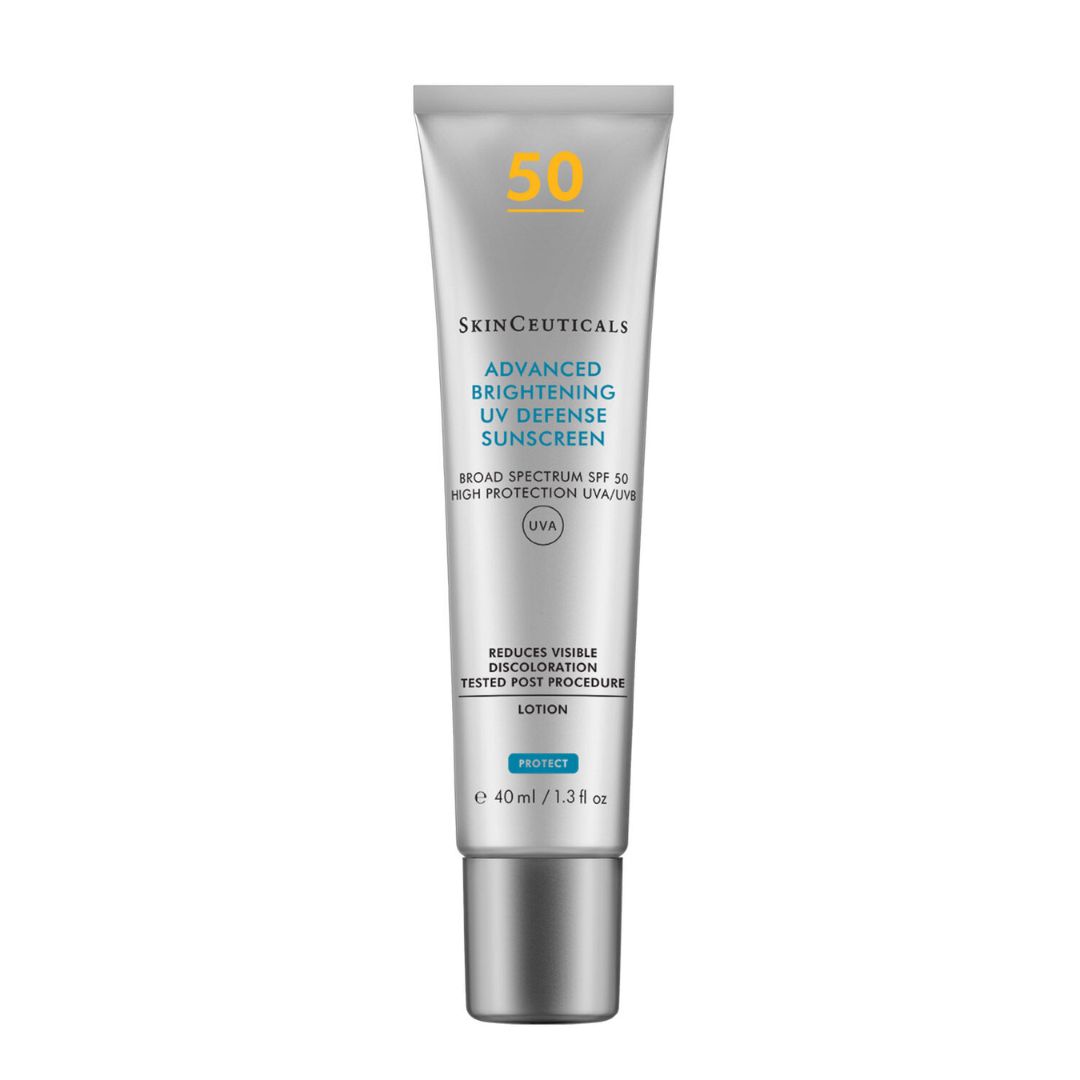
Everyday is SPF day. This is a dreamy facial sunscreen that my dry skin particularly likes thanks to how creamy it feels on the skin.
The rest was completely new to me and included some from the brand ZO Skin, which can only be purchased from a medical professional following a consultation. I was told that I needed to start cleansing morning and night - I had taken to sticking just to the evenings for fear my dry skin would feel attacked - with a hydrating cleanser.
I needed to get back into the swing of things with a punchy, yet effective, retinol. This was to encourage cell turnover and increase collagen production to help reduce the appearance of fine lines and wrinkles.
I was to introduce a gentle glycolic acid toner, to clear the dirt residue and help improve my texture, especially where my lines were most prominent. This is because dead skin cells can make them look worse. It also helps to prepare my skin for the next skincare steps.
I got my hands on a fancy-looking eye cream, which helps to target wrinkles and improves hydration.
And finally, I needed to employ the services of one of the most nourishing moisturisers that I have ever encountered. With dehydration you lose so much moisture, this cream was designed to put everything lost back into the skin.
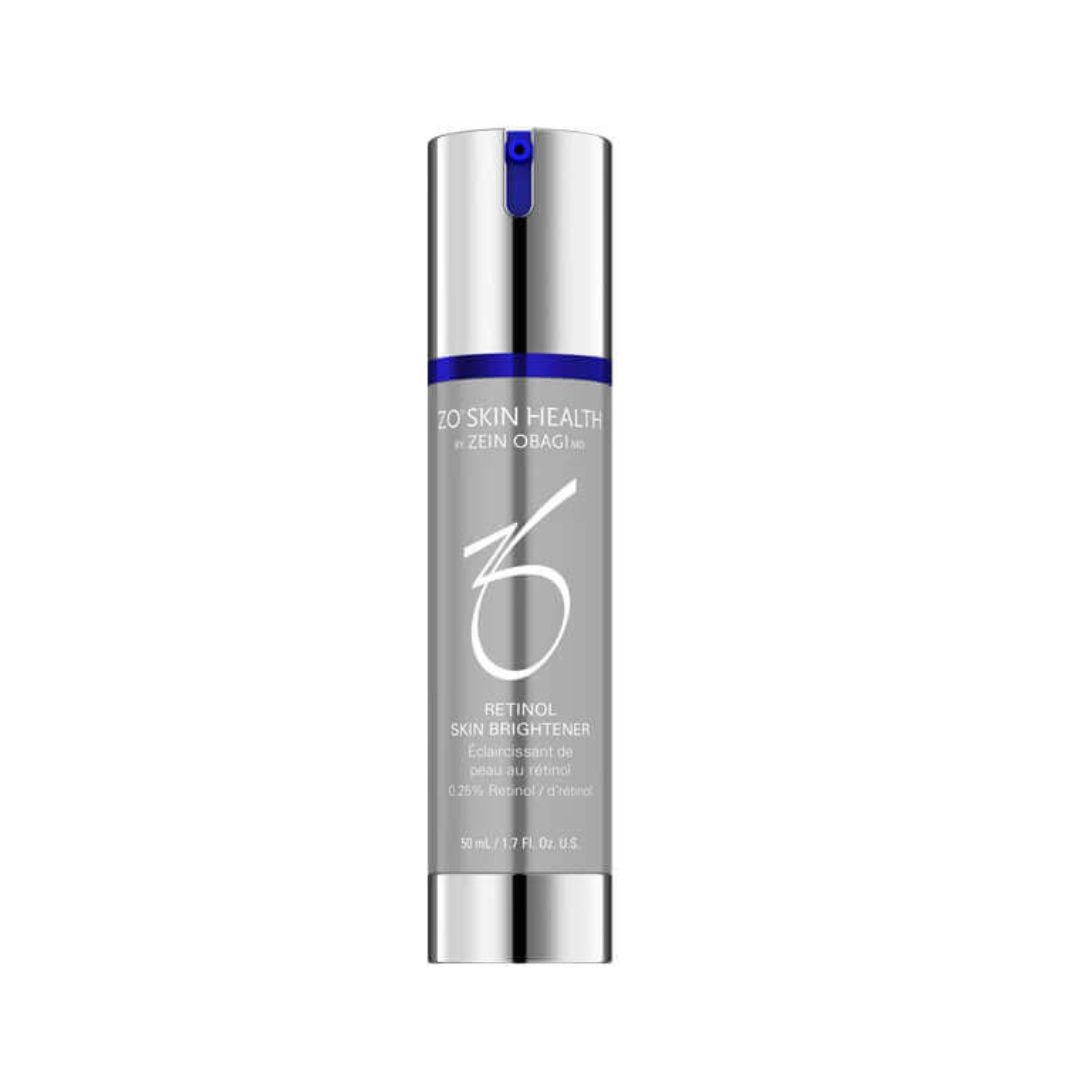
OK, this product has been a total game-changer for me. I had become lazy with my evening routine - mainly because of pregnancies and brief periods of breastfeeding - so only used retinoids if I remembered. But with this - which I started slowly, just twice a week and worked up to every other night - I wake up every morning to smooth, clear and brighter skin.
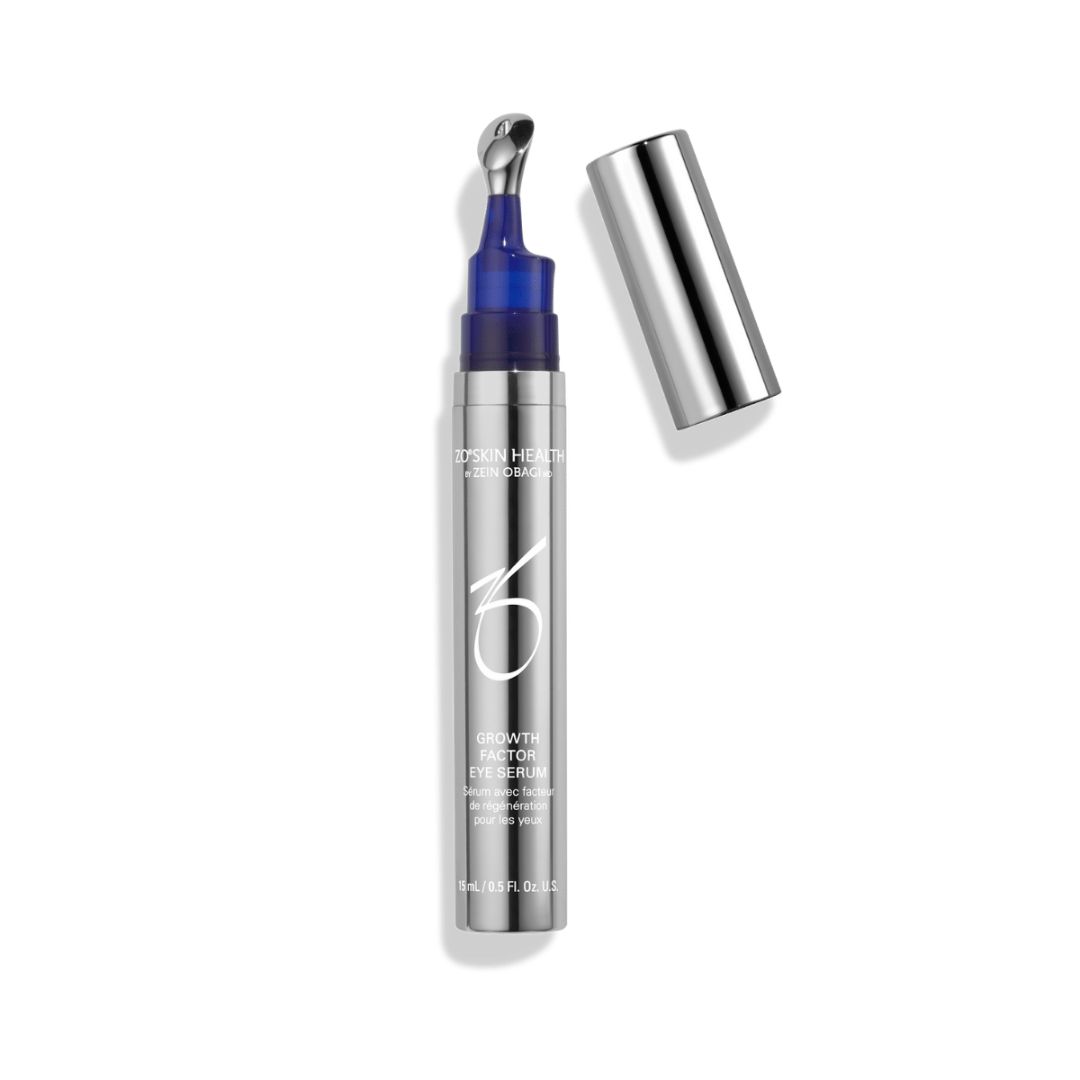
Jess told me that I would fall in love with this eye serum and she wasn't wrong. I have hereditary dark circles, so I'm always aware that no eye product will ever rid me of them. However, this serum certainly brightened them and the cooling applicator head felt glorious. I will add that since I started using it my sleep has not improved, but the puffiness has.
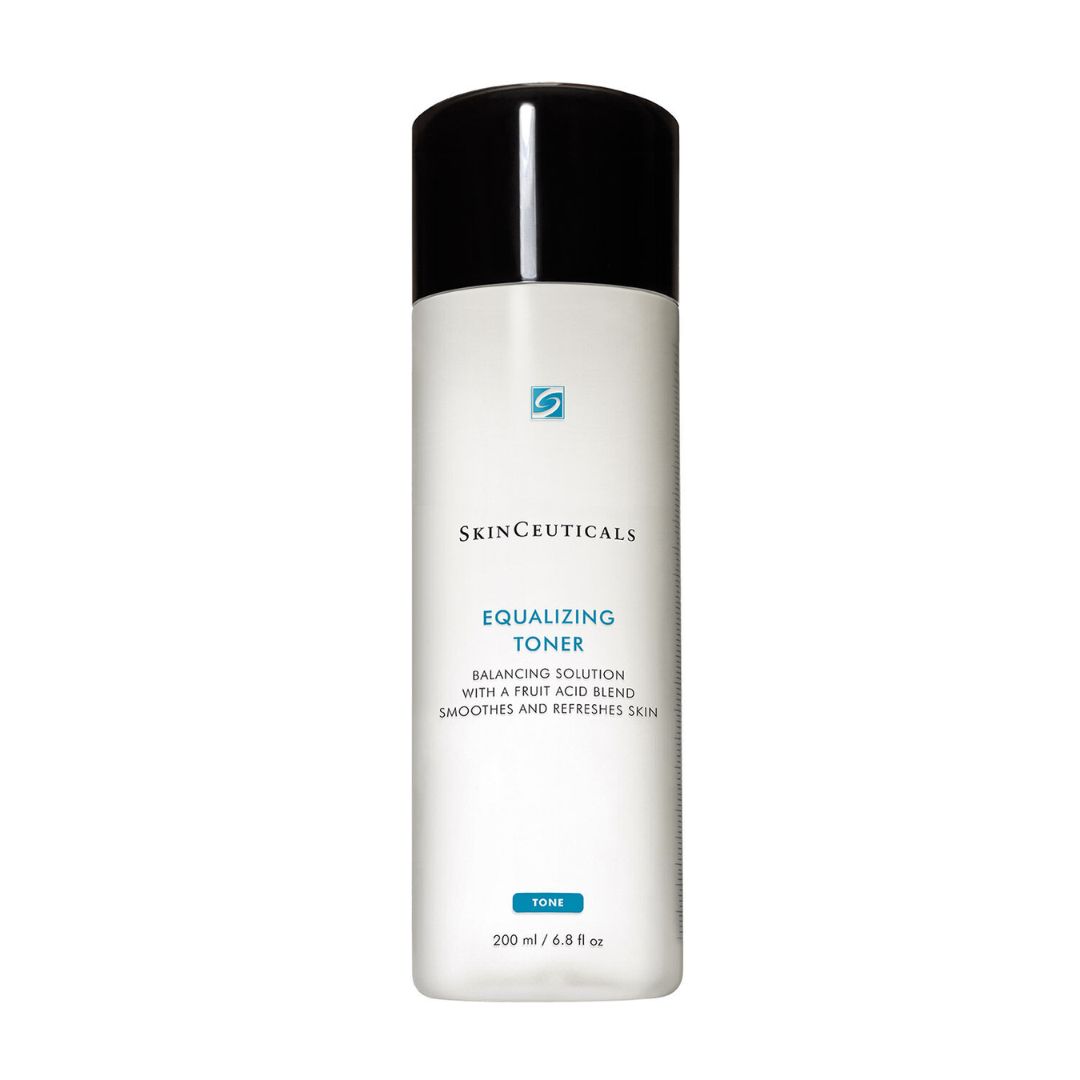
On the days that I don't use the retinol serum, I pop three or four drops of this onto a cotton pad and swipe it over my face, paying particular attention to the folds around my nose and around my hairline and ears, which is where I have a lot of unwanted texture and dirt. I don't typically like exfoliating toners, but this one isn't at all stripping and I'm glad I've found an easy, gentle way to exfoliate.
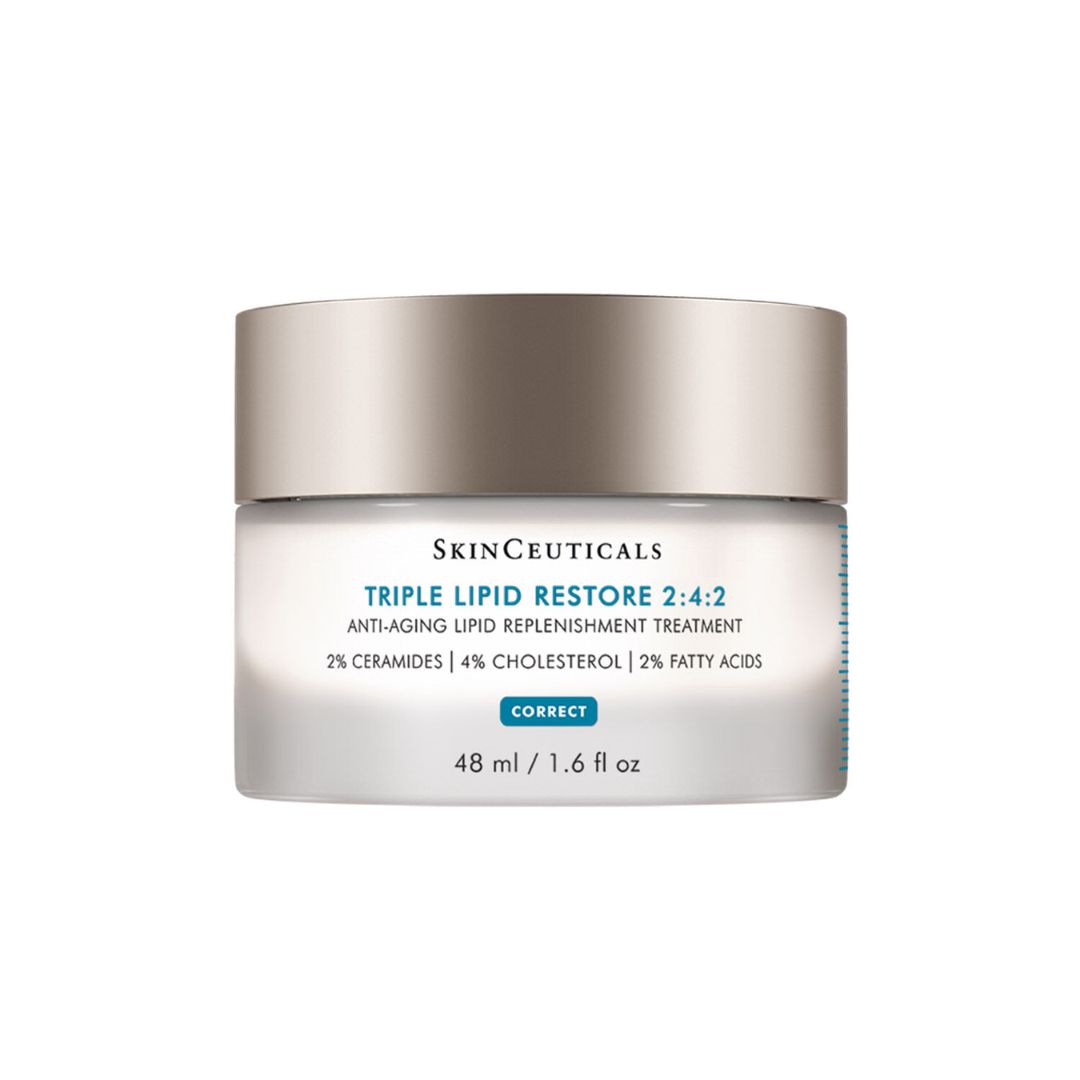
Oh my goodness, where do I begin with this cream? I'm just going to cut straight to it: it's the best moisturiser I've ever used. My dry and dehydrated skin doesn't stand a chance when bathed in this. My skin feels soft and looks naturally dewy. I love it so much, I wrote a love letter to it. Replenishment is the goal with goal and it achieves this with every use.
Whilst I cannot argue with how much these products improved my skin, I'm aware that they cost a lot and not everyone has the means of popping in to see a dermatologist for their cleanser. So I asked Jess about over-the-counter products that I could swap these in for and she recommended CeraVe cleansers and moisturisers and La Roche-Posay serums for treating specific issues.
Dr Noy said that for those concerned with skin ageing, but unable to see a dermatologist regularly or access advanced tools like the Visia machine, focusing on a consistent and effective skincare routine is crucial. "A basic skincare routine should include a gentle, hydrating cleanser, a moisturiser with ingredients such as hyaluronic acid and ceramides, and an over-the-counter retinol (or prescribed retinoid) to promote cell turnover. Adding antioxidant serums with vitamin C or E can help protect against environmental damage. And a daily sunscreen application using a broad-spectrum (to cover UVA and UVB at least) SPF 30 or higher to protect against UV damage, which is the leading cause of premature ageing."
The results
Just a little over three months after my first appointment at Montrose, I went back for my final Visia scan. Jess had been a little concerned about some increased pigmentation that had sprung up on the side of my face towards the end of the second month when spring had arrived and brought stronger UV with it (that's a lesson in SPF reapplication folks - Jess thinks it could be linked to not topping up my sunscreen throughout the day), so I was a little nervous that that wouldn't help my case.
I did, as I had done all those months ago, sat on the stool, leant forward for the photographs and waited until the computer revealed my number...35. I am 36.
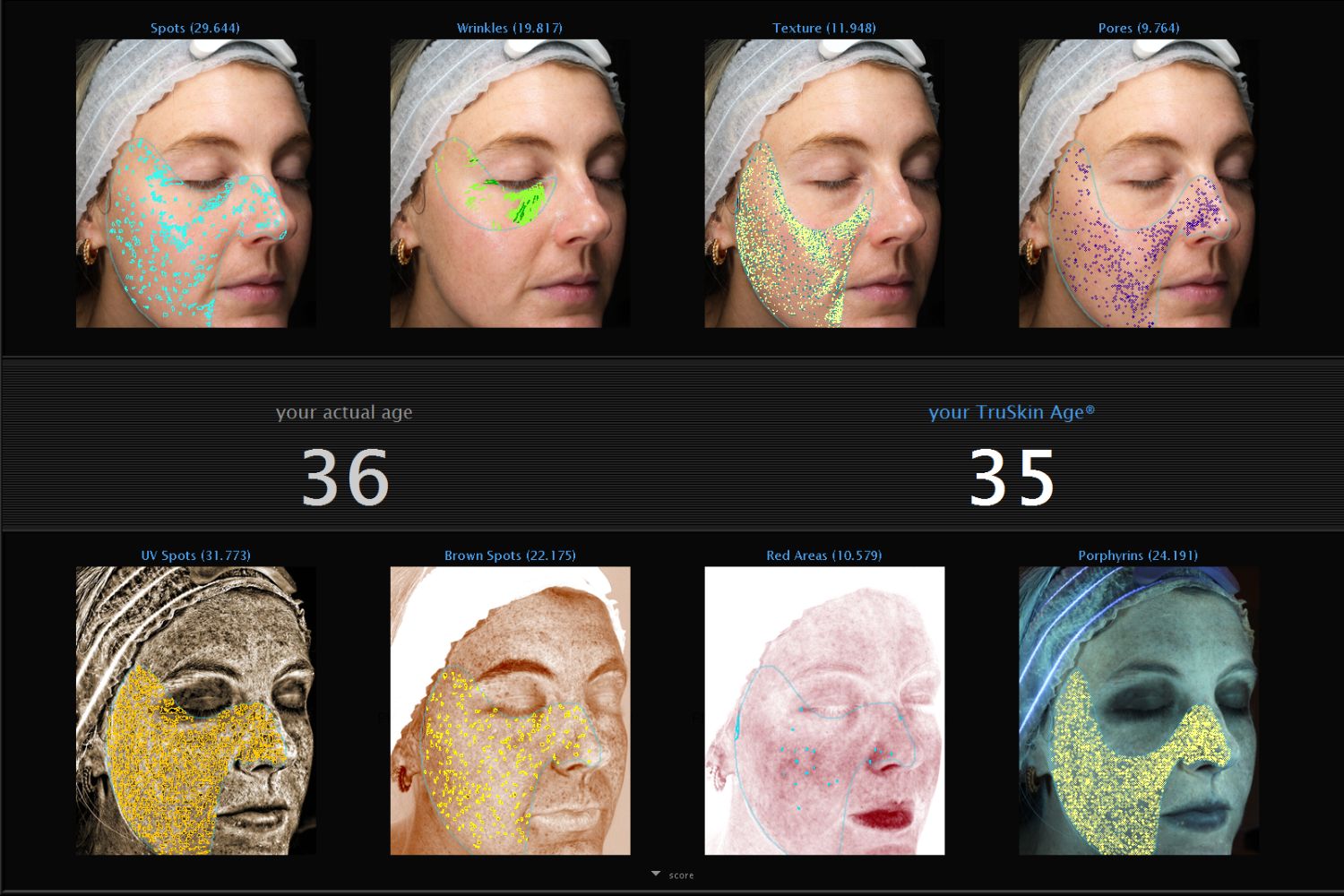
We had done it. The combination of super hydrating facials and effective skincare had helped me drop my TruSkin age by four years. I'll admit that initially, I was thrilled by the number, but when we took a closer look at the photographs that's really where the success lies. After just three months, my inflammation is all but gone, the drooping around my mouth has vastly improved and the established wrinkles starting to take hold around my eyes are barely visible.
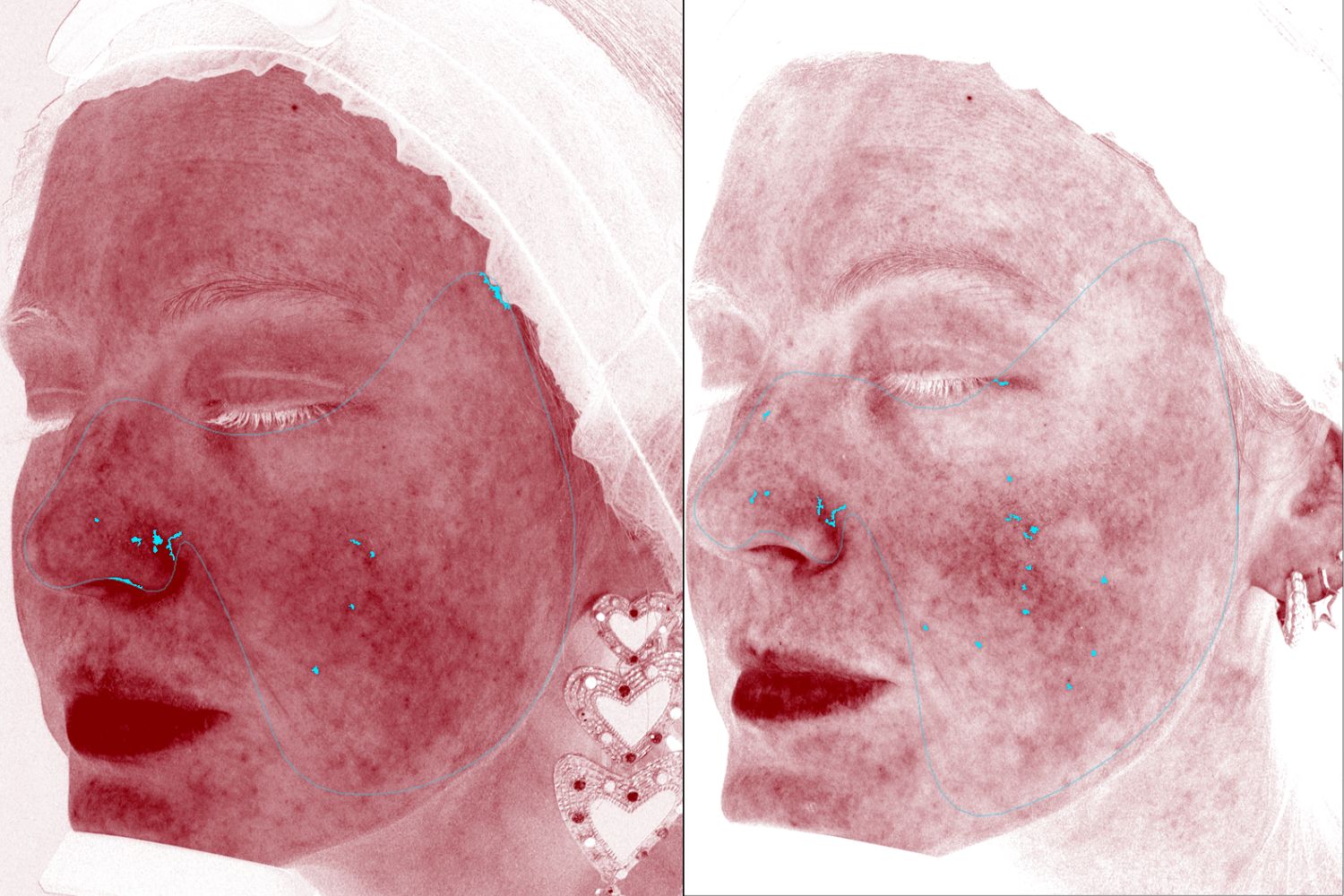
Visia images of my inflammation before (L) and after (R) we started the treatment
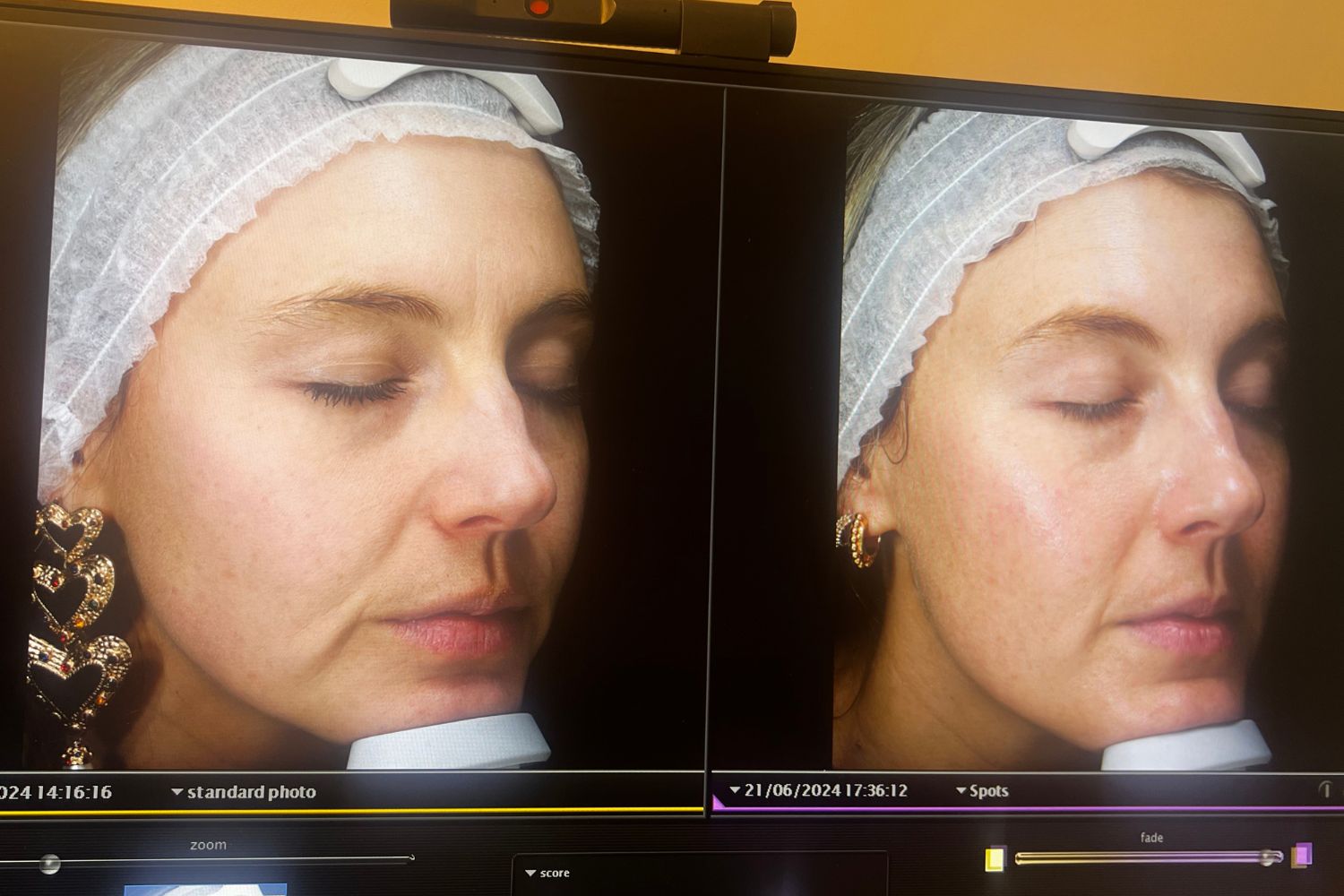
Visia images of my skin before (L) and after (R) we started the treatment
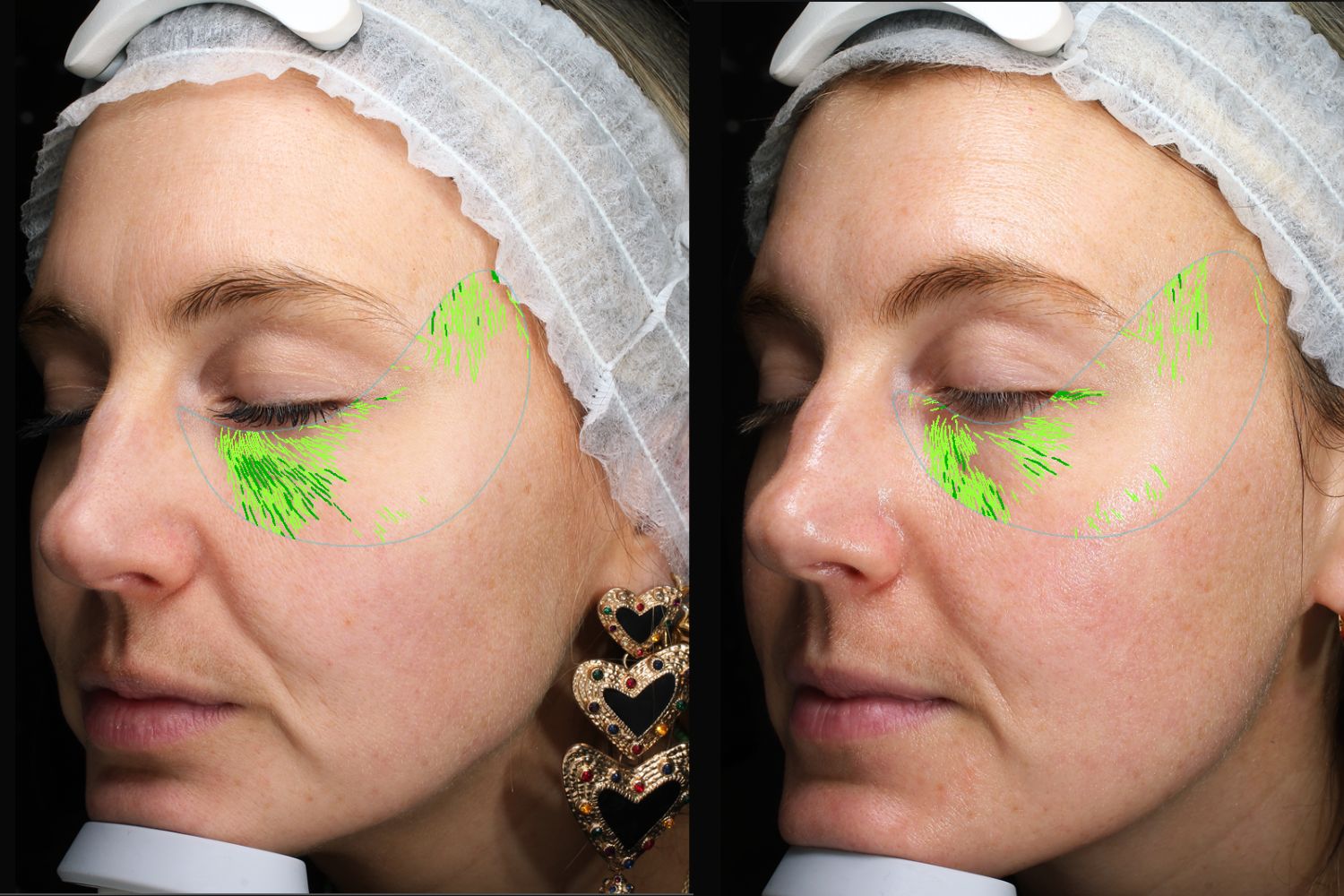
Visia images of the fine lines and wrinkles around my eyes before (L) and after (R) - the dark green lines are indicators of established wrinkles, whereas the lighter green are faint lines.
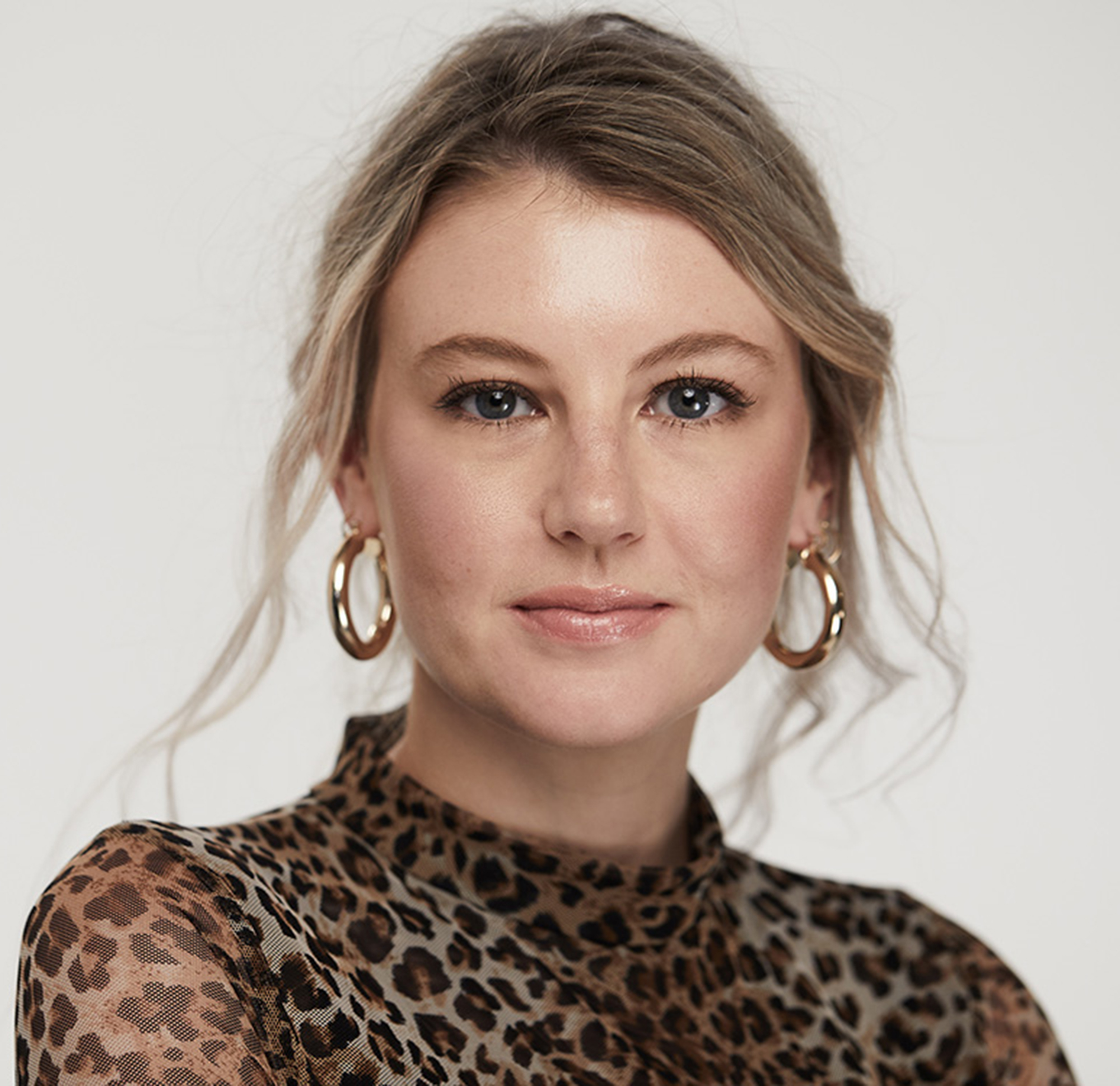
Katie Thomas is the Senior Beauty Editor at Marie Claire UK. With over 10 years of experience on women's luxury lifestyle titles, she covers everything from the best beauty looks from the red carpet and stand out trends from the catwalk, to colonic irrigation and to the best mascaras on the market.
